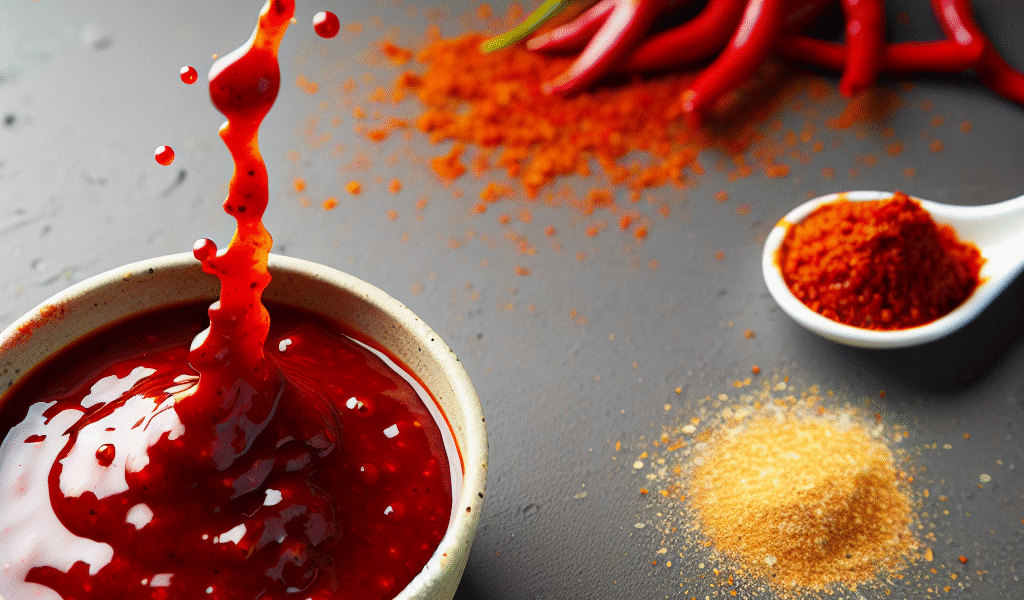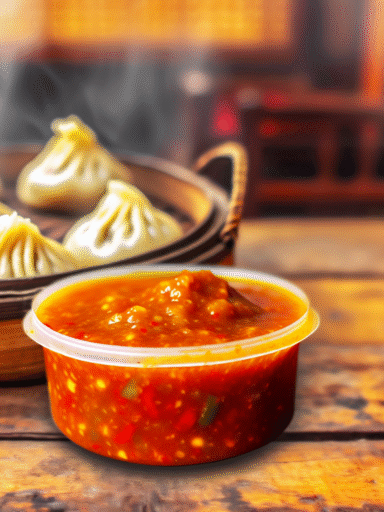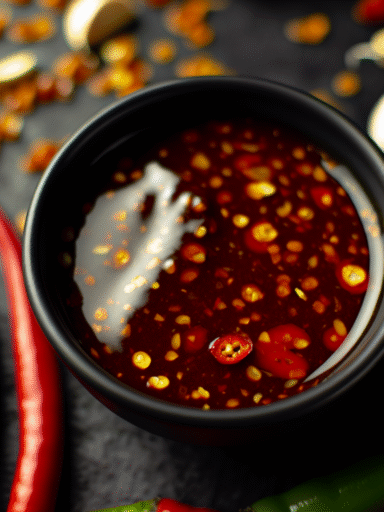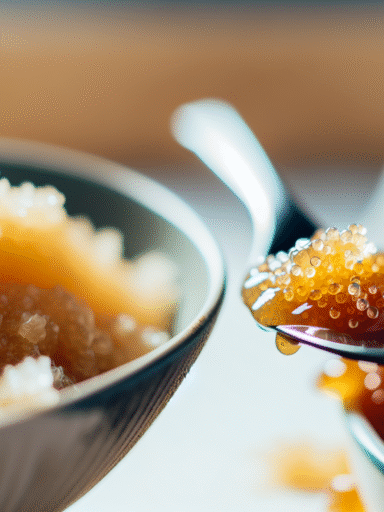Gochujang Sauce
If you love bold, spicy, and slightly sweet flavors, then Gochujang Sauce is about to become your new favorite condiment. This Korean red chili paste-based sauce brings a complex depth of flavor that’s perfect for marinating, dipping, or just about anything you want to jazz up. Let’s dive into what makes this sauce so special and how you can whip it up at home with ease.
Tags / Categories
- Flavor Profile: Spicy, sweet, umami-rich
- Main Ingredients: Gochujang (Korean chili paste), garlic, sesame oil, soy sauce, vinegar
- Region: Korean Peninsula, East Asia
- Usage: Marinade, dipping sauce, stir-fry base, condiment
Quick Info Box
- Prep Time: 5 minutes
- Cook Time: 0 minutes (no cooking required)
- Total Time: 5 minutes
- Difficulty Level: Easy
- Yield: About ½ cup (serves 4-6 as a condiment)
Ingredients List
- 3 tablespoons gochujang (Korean red chili paste)
- 1 tablespoon soy sauce (or tamari for gluten-free)
- 1 tablespoon rice vinegar
- 1 tablespoon honey or maple syrup
- 1 teaspoon toasted sesame oil
- 2 cloves garlic, finely minced
- 1 teaspoon toasted sesame seeds (optional, for garnish)
- 1-2 teaspoons water (to thin, if desired)
How to Make Gochujang Sauce: The Perfect Balance of Heat and Sweetness
Let’s be real—making gochujang sauce at home is almost cheating in how easy it is. You start with this wonderful Korean chili paste which is fermented and totally packed with flavor. Mix it with soy sauce for saltiness, a splash of rice vinegar for brightness, and honey to balance that savory heat. Oh, and don’t forget minced garlic—because garlic makes everything better!
First, grab a small bowl and scoop in your gochujang. Add the soy sauce, rice vinegar, and honey. Stir it up until everything’s smoothly blended together. If it feels too thick for your liking, add a teaspoon or two of water to loosen it up. Finally, drizzle in the toasted sesame oil and toss in your minced garlic. Give it one last stir—your kitchen will smell amazing right about now.
Don’t stress if it’s a little chunky; that’s just the garlic doing its thing. Once everything is combined, taste it. Want it sweeter? Add a touch more honey. Need more zing? Dab in a little extra rice vinegar. This sauce is flexible and forgiving, which makes it a total winner.
Serving Suggestions: Where Gochujang Shines Bright
This sauce is your new secret weapon. It’s the perfect dip for crispy fries or fresh veggies, an incredible marinade for grilled meats or tofu, or a quick stir-in for noodles and rice bowls. Drizzle it over bibimbap (Korean mixed rice), toss it with roasted cauliflower, spread it on sandwiches, or even mix it with mayo for a spicy sandwich spread. The spicy-sweet punch is seriously addictive, so keep extra on hand.
Origin & History: A Taste Deeply Rooted in Korean Tradition
Gochujang’s story goes back hundreds of years in Korea, where it started as a fermented chili paste made from red chili powder, glutinous rice, fermented soybeans, and salt. It’s been a staple in Korean kitchens for centuries and is beloved for its umami-rich complexity and slow-building heat. Unlike some hot sauces that just pack a punch and leave, gochujang layers flavor—sweetness, spice, and savoriness all coming together beautifully. It’s more than just a sauce; it’s a cultural icon that tells a story with every bite.
Variations & Substitutions: Tailor This Sauce to Your Taste
- Make it vegan: Swap honey for maple syrup or agave nectar.
- Lower sodium: Use low-sodium soy sauce or coconut aminos.
- Add extra depth: Stir in a teaspoon of miso paste or a splash of fish sauce for an umami boost.
- Spice it up: Toss in some freshly grated ginger or a pinch of cayenne powder if you want more heat.
- Regional twist: Use apple cider vinegar instead of rice vinegar for a slightly different tang.
Storage & Make-Ahead Tips: Keep Your Sauce Fresh and Ready
This sauce keeps beautifully in an airtight jar or container in the fridge for up to two weeks. Because it’s mostly fermented gochujang, it has great staying power, but fresh garlic can mellow as time goes on. If you want to prep ahead for a big cooking session, make a double batch. It won’t freeze well because of the fermentation qualities and texture changes, so stick to refrigeration.
Nutritional Information
- Calories: ~35 per tablespoon
- Fat: 1g (mostly from sesame oil)
- Carbohydrates: 6g
- Sugar: 4g (from honey)
- Protein: 1g
- Note: Values may vary depending on specific brands and substitutions.
Related Sauces / Try Next
- Ssamjang Sauce – Another Korean favorite combining soybean paste and chili paste for a thicker dip.
- Sriracha Sauce – A Thai-style chili sauce with a garlicky kick.
- Chili Garlic Sauce – Simple and fiery, perfect for adding heat to any dish.
FAQ
- Can I use regular chili paste instead of gochujang?
- You can, but the flavor will differ because gochujang is fermented and sweetened. Using a simple chili paste might be hotter but won’t have the same umami depth.
- Is gochujang sauce gluten-free?
- Traditional gochujang contains barley or wheat, so it’s not always gluten-free. Look for a certified gluten-free brand or check labels carefully, or use tamari in place of soy sauce to reduce gluten in your sauce.
- How spicy is gochujang sauce?
- It has a mild to medium heat—more of a warming spiciness than a sharp burn. You can adjust the heat by adding more or less gochujang or mixing in chili flakes if you want to amp it up.
Gochujang Sauce is a vibrant blend of spicy, sweet, and savory flavors that lifts any dish to new heights. With just minutes and a handful of ingredients, you can recreate this iconic Korean staple right in your kitchen. Whether you use it as a dip, marinade, or stir-in, it promises a punch of umami that keeps you coming back for more—trust me, once you start, there’s no going back!



